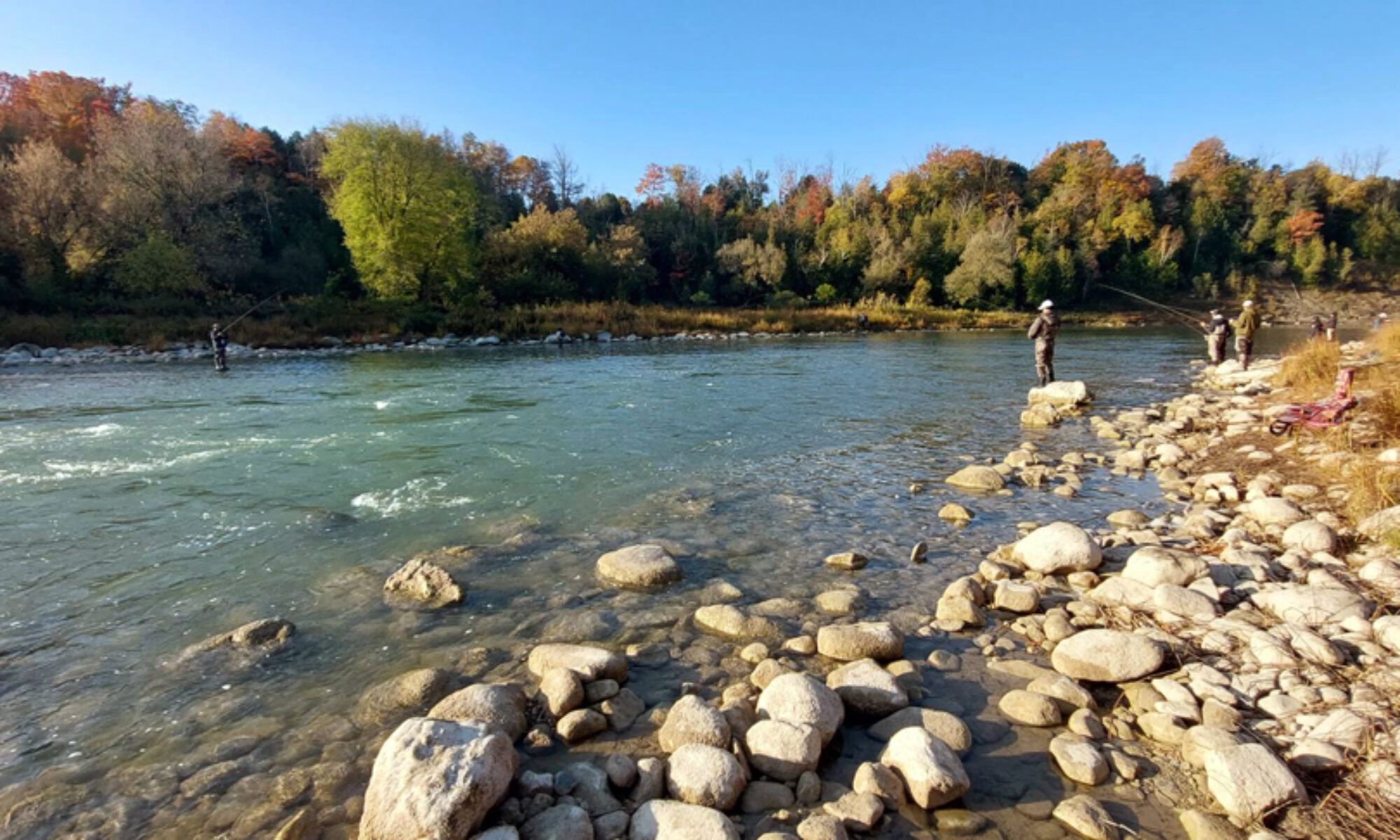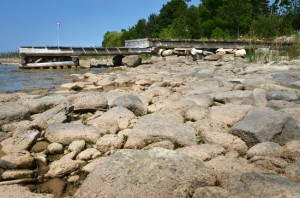Well folks it’s that time of year again were the OS is busy with a number of things. First we captured our adult’s at Denny’s Dam and moved them up stream to the prime spawning grounds of the Beatty headwaters of the Saugeen.
Next came egg taking for next year’s little guys and along with that will be the release of this year’s little guys who have by this time grown to some 6-10 inches and ready to take on the new world after spending almost a year being cared for by the guys at the LHFC and trust me they did as always, an excellent job.
There will be a release of about 60,000 from LHFC/OS and this year as an added bonus the MNR released approximately 35,000 more at the Beatty Saugeen these guys although slightly smaller than the LHFC guys due to colder water temp at the Chatsworth hatchery will no doubt only make the fishery that much stronger in the future.
Along with the MNR’s release at the Beatty there will some much needed follow up on the little guys in the Beatty later this year in the form of some Biomass work which will tell lots about how they are doing and the stream’s condition as well. We’ll keep you posted on that as the MNR’s Jody Schiefly made need some help with this.
Mother Nature was up to her old tricks and gave us a normal spring and so it took a little longer than usual to get the transfer done but the guys managed to as always get it done and transferred 962 adults to the prime spawning water of the Beatty Saugeen. A huge thank you goes out as always the volunteers that give their time and effort to get this done year after year and without this dedicated group the Saugeen would not be where it is today. The guys at the Dam also managed to take all the eggs needed by LHFC, OS and a couple of other groups and the MNR, all of these are going to the next generation of fish for next year.
Also this year at the request of Dave Gonder of the MNR and the Michigan DNR fish were wanded to check for implanted tags. If the fish was discovered to have a tag it was to be taken for study by the Michigan DNR as this would have been a Michigan fish which strayed over to our waters no fish were discovered to have tags.
The transfer of our little guys from the LHFC hatchery took place the weekend of April 26/13 and even though it was opening weekend of trout season the dedicated group got it done and all went smoothly. The little guys are now swimming around in their new home the Saugeen for a short time till they smolt out and migrate to Lake Huron were they’ll spend the next three years growing before they come back to their home the Saugeen. This year for the first time in many years the OS will take part in a Sportsmen Show. We will be at the Sportsmen in Walkerton Ontario the weekend of May31-Jun2 so if you haven’t got any plans make a trip to the show and stop by for a visit.
Also a first in the history of the OS we have a finalized constitution so a big thank you to the current BOD of the OS for getting this done.
Also very shortly the OS will have the revised Website up and running and there will be lots of new features for all you tech- types so stand by for this in the next couple of months.
The BOD is also looking into getting the Club incorporated for the future so we’ll keep you posted on how this is going.
So as you can see it’s been a busy time and looks to stay that way for quite some time to come, also keep in mind that there will be some upcoming elections in the near future so think about it as Member of the OS if it’s time to step up to the plate and take on a job to help lead the Club into the future.
Have a great summer, be safe and enjoy the great outdoors.
Karl Redin
President
Ontario Steelheaders



